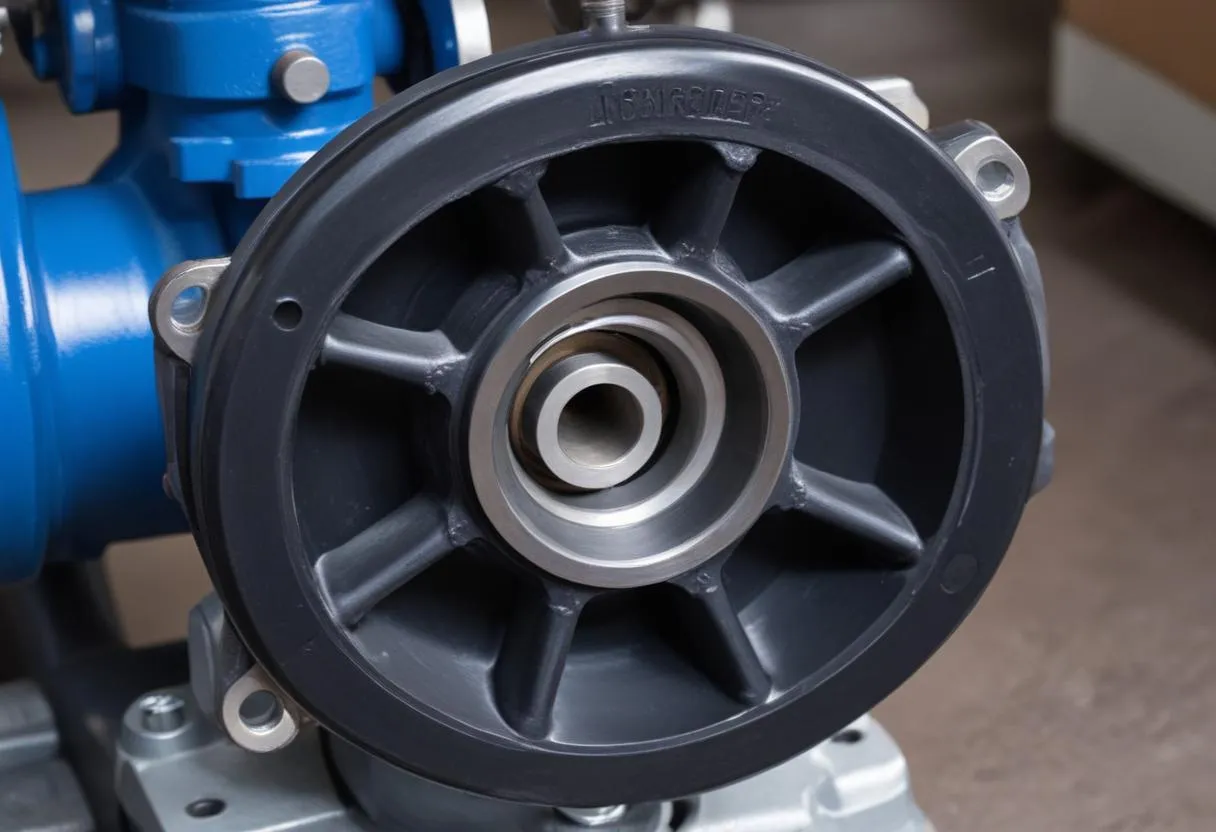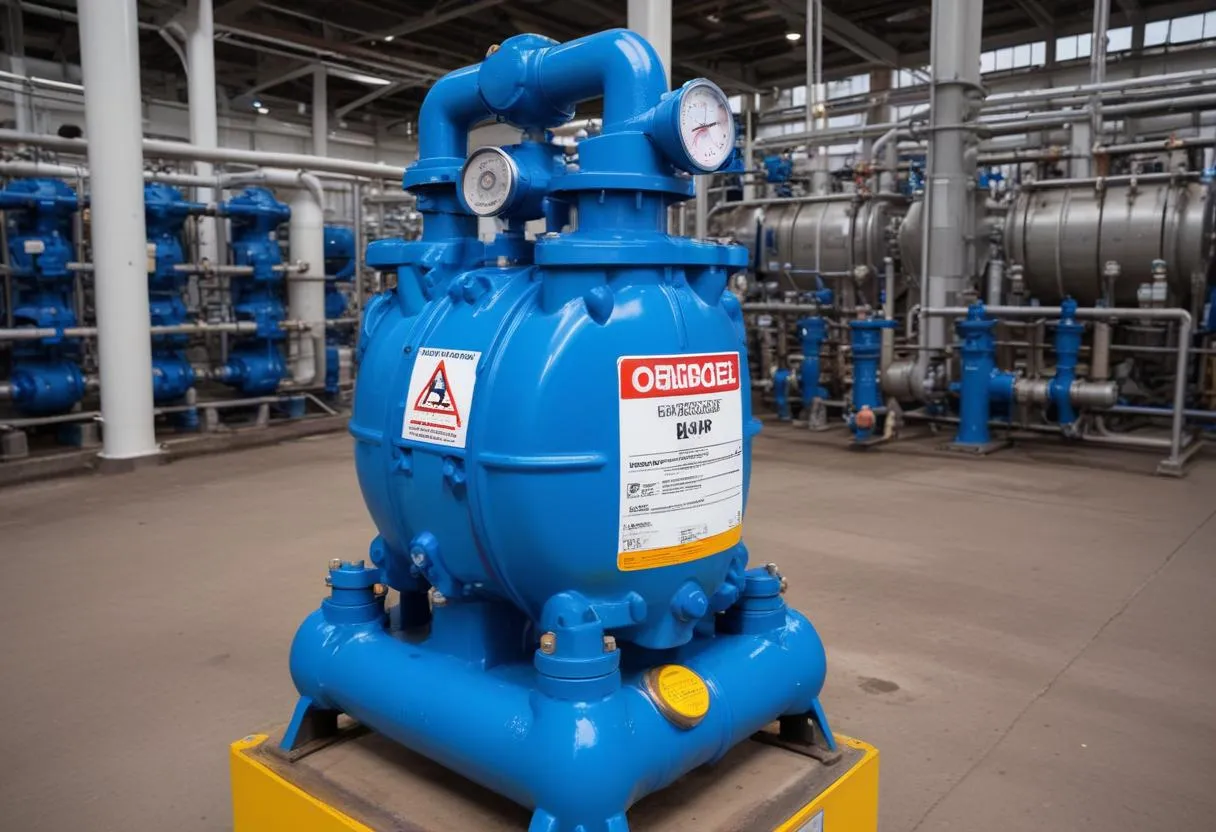 Diaphragm pumps, also known as membrane pumps, operate through a simple yet effective mechanism that allows them to transfer both fluids and gasses. These pumps are characterized by a diaphragm that vibrates to create a temporary vacuum for drawing in and expelling the medium. The functioning involves several components that contribute to the efficient movement of materials.
Diaphragm pumps, also known as membrane pumps, operate through a simple yet effective mechanism that allows them to transfer both fluids and gasses. These pumps are characterized by a diaphragm that vibrates to create a temporary vacuum for drawing in and expelling the medium. The functioning involves several components that contribute to the efficient movement of materials.
The core component of a diaphragm pump is the flexible diaphragm. Typically made from materials like rubber or Teflon, the diaphragm is secured on its edges and attached to a rod or actuator in the center. This setup allows the diaphragm to flex up and down as driven by the pump’s motor or actuator mechanism.
The following sequence outlines the primary steps in the pumping action:
- Contraction: The diaphragm contracts, pulling down towards the motor side of the pump, increasing the volume of the pumping chamber. This action reduces the pressure in the chamber below atmospheric pressure, creating a vacuum.
- Suction Phase: As the pressure in the chamber drops, fluid or gas is sucked through the inlet valve due to the pressure differential between the pump interior and the external environment.
- Expansion: After the suction phase, the diaphragm expands. This movement increases the pressure inside the pumping chamber and forces the diaphragm to push upwards.
- Discharge Phase: The increase in pressure forces the fluid or gas out of the chamber through the outlet valve as the diaphragm moves towards its original position.
The operation of diaphragm pumps does not involve any internal components submerged in the liquid, which minimizes the risk of leakage or contamination. Additionally, this pumping mechanism allows for the handling of corrosive materials, high-viscosity fluids, and slurries with a high percentage of solid or abrasive particles.
Most diaphragm pumps are driven by air (pneumatically) or electricity. The air-driven pumps are preferred in hazardous environments since they do not require electrical connections and reduce the risk of ignition. Electrical diaphragm pumps are primarily used in situations where air supply is not available or for applications requiring precise flow control.
Two common designs of diaphragm pumps are:
- Single acting: These pumps utilize one diaphragm which performs all suction and expulsion actions. This type is simpler and generally used for smaller capacity applications.
- Double acting: These pumps have two diaphragms working simultaneously to balance the load and increase the pump efficiency and flow rate. They are commonly used in industrial settings where high volumes of fluid need to be transferred steadily.
Efficiency of diaphragm pumps can be enhanced using electronic control units that regulate the actuator’s speed and stroke, further improving the accuracy and responsiveness of the pump to different operational demands.
In summary, diaphragm pumps rely on the flexible movement of diaphragms to translate mechanical action into fluid movement, making them suitable for a wide range of applications that require safe and efficient transfer of materials.
Advantages and limitations
Diaphragm pumps offer a host of advantages that make them suitable for diverse applications across various industries. One of the primary benefits is their ability to handle abrasive, corrosive, and viscous substances without suffering damage to internal components. This resilience stems from the minimal moving parts and the fact that the fluid or gas does not come into contact with components like gears or pistons that are prone to wear.
Another significant advantage is their seal-less construction, which remarkably reduces the likelihood of leaks. This quality is especially important in industries where contamination could be disastrous, such as in the pharmaceutical or food processing sectors. Furthermore, the simplicity of their design makes diaphragm pumps easy to maintain and repair, which can lead to lower operational costs over time.
Diaphragm pumps are also highly valued for their dry running capabilities. Unlike many other pump types, they can operate without fluid for a considerable duration without damage. This is particularly useful in situations where pump priming is not always guaranteed.
On the environmental front, diaphragm pumps are favored for their efficiency and the ability to minimize energy consumption, making them a more sustainable option. The capacity to work effectively under variable conditions with adjustable flow rates and pressures further adds to their operational flexibility.
However, diaphragm pumps are not without their limitations. The primary challenge associated with these pumps is their low flow rate compared to other types of industrial pumps such as centrifugal or rotary gear pumps. This characteristic makes them unsuitable for applications requiring the rapid movement of large volumes of fluid.
Moreover, while diaphragm pumps can handle a wide range of materials, they are typically limited by the temperature and chemical composition of the fluids they can process. Extreme temperatures and highly corrosive substances can degrade the diaphragm material, albeit their compatibility with aggressive media generally exceeds that of many other pump types.
The initial cost of diaphragm pumps might also be a constraint, especially for higher-end models designed for specific industrial capabilities. Additionally, the pulsation characteristic inherent in diaphragm pumps can be disadvantageous for applications requiring a smooth, consistent flow without using additional equipment like pulsation dampeners.
| Advantage | Limitation |
|---|---|
| Handles abrasive, corrosive, viscous substances | Lower flow rates |
| Seal-less construction reduces leaks | Susceptibility to damage from extreme temperatures and corrosive chemicals |
| Energy efficient and sustainable | Higher initial investment costs |
| Dry running capability | Pulsation may require additional dampening |
In weighing these advantages against the limitations, it becomes crucial for users to carefully consider the specific requirements and constraints of their applications when choosing a diaphragm pump. The right pump selection ensures not only effective and efficient operations but also enhances the longevity and reliability of the pumping system.
Common applications and industries
 Diaphragm pumps have carved out a niche across various industries due to their unique operating characteristics and ability to handle challenging fluid dynamics. Here’s a look at some of the primary sectors and the common applications where these pumps are extensively used:
Diaphragm pumps have carved out a niche across various industries due to their unique operating characteristics and ability to handle challenging fluid dynamics. Here’s a look at some of the primary sectors and the common applications where these pumps are extensively used:
Chemical Industry: Given their resistance to corrosive and hazardous chemicals, diaphragm pumps are widely utilized in chemical manufacturing for the transfer of acids, solvents, and other aggressive compounds. They ensure safe handling by minimizing the risk of leaks and exposure.
Water and Wastewater Treatment: These pumps are ideal for dosing and metering applications essential in water treatment processes. They accurately administer precise amounts of chemicals like chlorine and coagulants needed for water purification.
Pharmaceuticals: The high standards for cleanliness and contamination prevention in the pharmaceutical industry make diaphragm pumps a preferred choice. They are used for handling sensitive fluids, including blood, sera, and culture media, because they prevent cross-contamination.
Food and Beverage: In food processing, hygiene is paramount. Diaphragm pumps cater to this need by moving viscous masses like fruit jams or dairy products without corrupting their integrity or allowing bacterial growth through contamination. Their gentle pumping action also preserves the quality and texture of food products.
Paints and Coatings: The ability to handle high-viscosity substances makes diaphragm pumps suitable for the paints and coatings industry. They can efficiently manage varied substances such as resins and emulsions integral to paint formulation.
Mining: The rugged nature of mining operations finds a good match in diaphragm pumps, which are employed for tasks like draining mine shafts, pits, and sumps. They can pump out abrasive and particulate-laden slurries encountered underground.
Oil and Gas: Diaphragm pumps are employed in oil and gas extraction and processing to handle a variety of tasks including fluid transfer, chemical injection, and even in the management of drill cuttings and drilling mud.
Construction: Simplicity, reliability, and the capability to pump abrasive mixtures like cement slurry make these pumps ideal for construction sites. They ensure smooth application and handling of building materials, often in tough environments.
Medical and Laboratory Technology: Diaphragm pumps offer precision in environments where dosage and rate of administration are critical. Laboratories utilize them for handling various chemicals and reagents needed in research and diagnostics.
By understanding the diverse applications and sectors diaphragm pumps serve, businesses can better appreciate the versatility and functionality these pumps bring to complex fluid and material handling tasks. Here’s a summarized table highlighting various sectors and their typical uses of diaphragm pumps:
| Industry | Common Applications |
|---|---|
| Chemical | Transfer of corrosive chemicals, acids, and solvents. |
| Water Treatment | Dosing and metering of treatment chemicals. |
| Pharmaceutical | Handling blood, sera, and other sensitive fluids. |
| Food and Beverage | Transportation of viscous foods and beverages. |
| Paints and Coatings | Handling of paints, resins, and coatings. |
| Mining | De-watering and slurry transportation. |
| Oil and Gas | Fluid transfer, chemical injection. |
| Construction | Pumping of abrasive mixtures like cement. |
| Medical and Lab Technology | Precision handling of chemicals in labs. |
These diverse applications demonstrate the adaptability and essential role of diaphragm pumps in maintaining operational efficiency and ensuring safety across numerous fields.